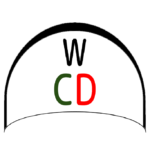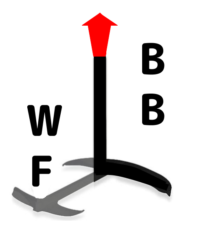
In my last blog post, I shared how I’ve been developing a formula to relate the size of your wing foiling equipment to your weight, to better share and understand the Lift potential with other foiling friends. Since then I’ve been hard at work, finalizing the first formula and creating tools to support it’s use. In the process, I collected a small amount of data from a few friends about the equipment combinations that they use for particular wind conditions. This was key to deciding on the formula, so I thank each of you contributors for your help.
Today I’m also excited to announce the availability of a web app designed to make it easy to share your ‘L’ potential number in the context of actual sessions on the water. In this post I’ll share the goals of this tool and how you can signup to be a beta tester.
Goals for the formula:
- Get a better feel for what to set up, based on what your friends are using for equipment, even if their weight is much different from yours.
- A single number accounts for your foil size, wing size and weight.
- A larger number represents more power to get up on the foil, just like the Wing sizes people are used to comparing.
- Ideally the range of numbers is similar to the wing sizes that have been central to our beach conversations in the past, even though they represent the bigger Lift potential picture.
- Easy to calculate. It’s probably not common for people to know how much their board weighs, so we’ll leave that out of the formula for now.
As we gather more data and experience with the formula, we may want to make adjustments. But the formula seems to meet all the above goals. The formula is simply:
L = W / R * 500 + F / R
Where:
L = Lift potential number or just ‘L’ for short.
W = Wing area in meters.
R = Rider weight in kilograms.
F = Front foil area in centimeters.
For now your board specifications will not be taken into account by the formula. That may have to change, as narrow, long downwind boards become more popular. These boards enable launching onto the foil with significantly smaller wings and foils in lighter wind. But the ability to launch is not the only reason the ‘L’ number will be helpful. Here are the ‘L’ numbers for my quiver:

As you can see, the range of ‘L’ values is familiar, so the formula meets goal 4 above. This screen shot shows one of the central user interfaces for the new Lift BB.
Goals (and functions needed to reach them) for the Lift potential bulletin board, or Lift BB for short.
- Create an inventory of all your equipment which allows you to:
- Display, in a single table view, the ‘L’ values for each of your wing and foil combinations, which allows you to:
- Use your setup ‘L’ number instead of just wing size to discuss optimal equipment setups.
- Post a session just before you launch to share your location, ‘L’ and equipment information with the community in real time, which allows:
- Display the recent (today’s) sessions that are in your area, including start time, their wing colors, ‘L’ values and BB member’s public name or handle at a glance.
- When you are done (or later that evening) update your session with (better) wind estimates and ideally a GPX file upload to nail down the location, average speed, distance traveled, etc.
- Know how much wind there was during your session, from weather station historical data.
- Display a historical list or graph (‘L’ vs Wind speed) of sessions, filtering on various criteria including sessions near you or any specified location. This will allow:
- Gain a better understanding of the (range of) ‘L’ values needed for various wind conditions. The range will be due to rider skill variations, which riders will be sharing in their profile (self assessment) too.
The beta version of the Lift BB provides the functions outlined above. There is room for user interface improvement, of course. But I’m hoping there are enough community minded riders out there willing to share their information with others, so they can make informed choices about where to wing today and what equipment is likely to work well for them.


Leave a Reply